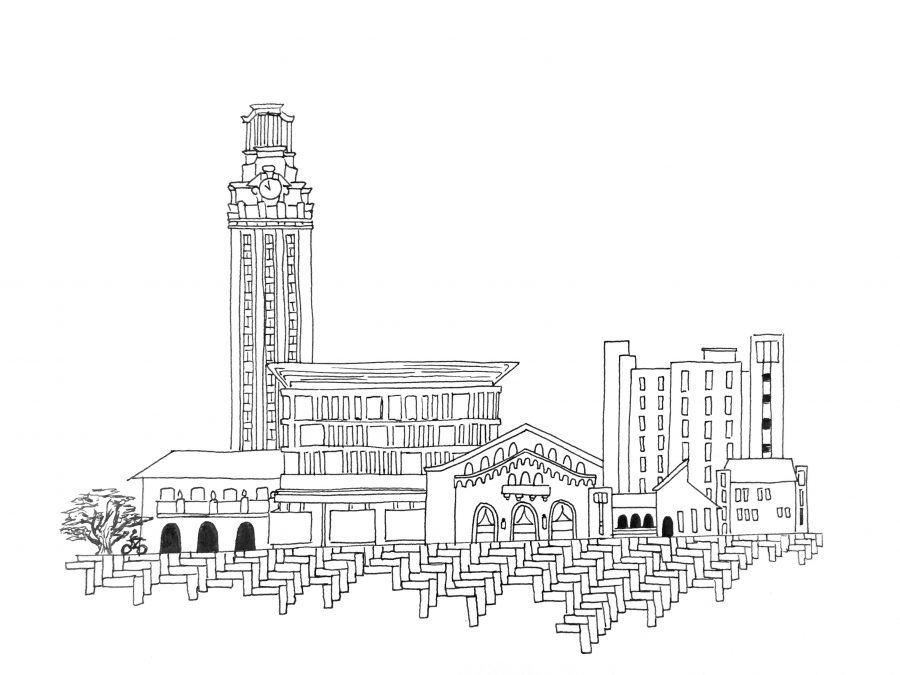Complaining about construction on campus is a sacred Longhorn tradition. But with the infamous Speedway construction set to finally end this spring, it appears that, for once, we might not have any more construction nuisances to worry about — and that’s a tradition we can’t let die.
The impending completion of Speedway has left students wondering what improvements will come next. It’s nice to daydream about, but Longhorns must not become complacent. The only way we can ensure campus continues to become more livable, other than enduring more construction, is through pressuring the University to make it happen.
Perhaps nobody knows this better than professor Austin Gleeson, former head of the Campus Master Planning Committee. Gleeson and the committee were instrumental in bringing the Speedway renovations into the mainstream in the late 1990s, but in the interim, saw their ideas fade into obscurity.
“Nobody made any noises about getting it done,” Gleeson recalls of University officials, and the project fell by the wayside for nearly two decades. According to Gleeson, It was only with Student Government pressure nearly two decades later that the Board of Regents finally approved the Speedway improvements.
For all the hassle, Speedway has become the heart of campus — an attractive space that people not only want to go to but are proud of. The question now is whether Longhorns are willing to put up with more headaches to better our campus’ livability, and if so, what it is they want to improve.
Plan II and music composition freshman Noah Simon personally hopes that more streets are turned into pedestrian spaces. As a biker, he casually notes that “it’s a little bit dangerous” for him to use roads with automobile traffic — now a nonissue on Speedway. He also hopes the University take efforts to beautify and improve campus — quipping that “there are parts of (campus) that are super ugly — and there’s no reason for a college campus to be ugly.”
When asked if he knew about any proposed future projects on campus, Simon said he couldn’t name any. Gleeson said the same.
While the University does have a “Campus Master Plan,” a wish list of new buildings and public spaces that the University created within the last six years, it’s poorly advertised. Although the master plan does include eliminating more asphalt on campus, Speedway is the only public-space construction that appears to be on their agenda for the near future.
It’s nice to have an ambitious set of plans to improve campus, but if the University doesn’t prioritize them, students and the all-important donors don’t know about them. That makes it hard to be optimistic about seeing ground broken on these projects any time soon.
Student Government — the patron saint of Speedway and the Student Activity Center — doesn’t provide much of a relief to these woes. Gleeson laments that SG projects all too often are ignored or forgotten because “there’s no continuity … in Student Government (administrations).” With each year’s new assembly pursuing its own short-term agenda, projects that require years of patience and persistence often are put on the back burner. That makes projects such as Speedway flukes — not evidence of a
well-oiled machine.
The Speedway project didn’t happen overnight, it was first proposed in the 1930s. Students shouldn’t expect campus improvement projects to magically happen. If we want a more livable campus, it’s up to us to create the pressure to make it happen. It’s our campus, so let’s make it one we love to live on.
Buckner is a Plan II and government freshman from Austin.





















